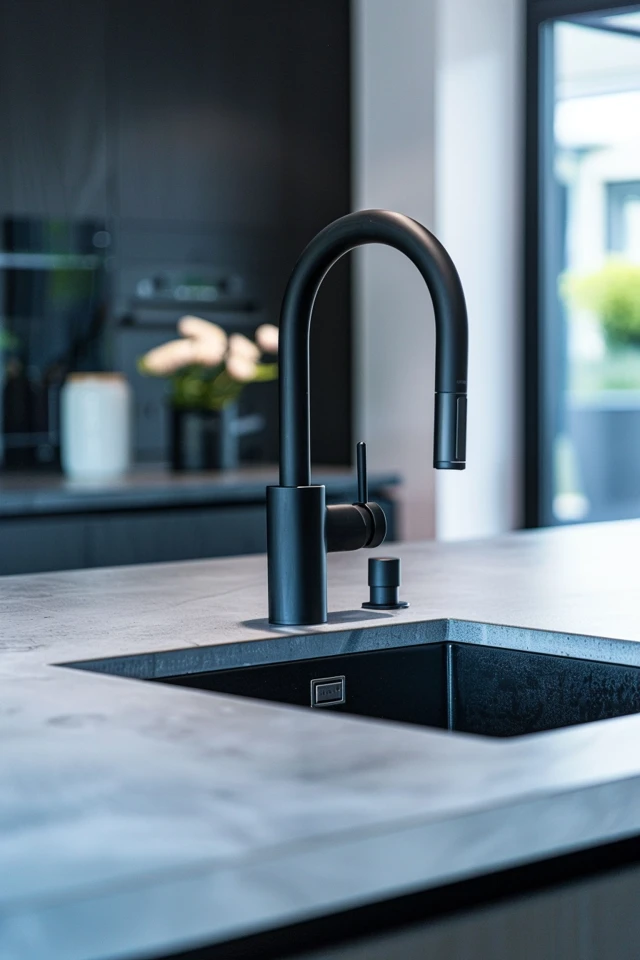When it comes to kitchen design, the kitchen island has become a must-have feature. Not only does it provide extra storage space, but it also serves as a functional work area. And if you’re considering adding a sink to your kitchen island, you’re in for a treat.
Designing a kitchen island with a sink allows for greater functionality and convenience. It creates a centralized space for meal prep, cleaning, and socializing, making it the heart of your kitchen. Whether you’re building a new kitchen island or remodeling an existing one, incorporating a sink into the design can elevate your cooking experience.
But before you embark on this DIY project, there are a few things to consider. From sink placement to countertop material, every detail matters to ensure your kitchen island is both functional and stylish. So, let’s dive into the world of kitchen island design and discover how to build a kitchen island with a sink that meets your needs and enhances your space.
Key Takeaways:
- Designing a kitchen island with a sink brings functionality and convenience to your kitchen space.
- Consider the purpose and size of your kitchen island to determine the best design and layout.
- Choose durable countertop materials that complement your kitchen’s style.
- Utilize storage options like drawers, cabinets, and shelving to keep your kitchen essentials organized and within reach.
- Place the sink centrally in the island to create an efficient workflow and maximize space utilization.

Designing a Functional Kitchen Island
When it comes to creating a functional kitchen island, it’s essential to consider its purpose and how it can best serve your needs. Whether you’re looking for additional storage, extra countertop space, or a dining area, designing a kitchen island that meets these requirements is crucial.
Start by evaluating the size and shape of your kitchen’s footprint to ensure the island fits seamlessly within the overall layout and doesn’t obstruct traffic flow. Consider the existing design theme of your kitchen and choose materials and style for the island that complement it. Durable options like granite, quartz, marble, or butcher block are recommended for the countertop, offering both longevity and visual appeal.
Storage is another important consideration when designing a functional kitchen island. Utilize drawers, cabinets, and shelving to organize pots, pans, utensils, and other kitchen essentials. This will not only enhance the island’s functionality but also help keep your kitchen clutter-free and organized.
Pro Tip: Incorporating pull-out shelves and dividers can maximize the efficiency of your storage space, making it easier to access and organize items.
Lighting plays a significant role in both the functionality and aesthetics of your kitchen island. Ensure proper task lighting by placing pendant lights or recessed lighting above the island. This will enhance visibility while cooking or performing other tasks. Additionally, add some ambient lighting or decorative fixtures to create a warm and inviting atmosphere.
Remember, a well-designed and functional kitchen island can transform your cooking space into a hub of activity, providing you with added convenience and style. So, take the time to plan and create a custom kitchen island with a sink that perfectly suits your needs and enhances your kitchen’s overall design.

Sink Placement in a Kitchen Island
When designing a kitchen island with a sink, the placement of the sink is a crucial consideration. It not only impacts the functionality of the island but also enhances the overall workflow and efficiency of the kitchen. To achieve a seamless work triangle between the sink, refrigerator, and stove, positioning the sink centrally on the island is essential. This allows for easy movement and optimal utilization of space.
If you have a dishwasher, it is practical to place it next to the sink on the island. This arrangement helps to avoid dripping dishes and ensures a smooth workflow while cleaning up. For added convenience and efficiency, consider installing two sinks if the space allows. One sink can be dedicated to cleaning up, while the other can be reserved for food preparation.
The specific placement of the sink in the kitchen island can vary based on individual preferences and available space. Some may prefer positioning the sink under a window to enjoy a pleasant view while doing kitchen tasks. Alternatively, placing the sink centrally in the island allows for easy access and social interaction when entertaining guests.
When selecting a sink for your kitchen island, it’s crucial to consider the size. Ensure that there is ample work surface space on either side of the sink for prep work and other kitchen activities. Incorporating drainage grooves or a sink-side drainer adds practicality and functionality to the sink area. Lastly, choose a sink style and tap that blend well with the overall design of the island for a cohesive and visually appealing kitchen space.


